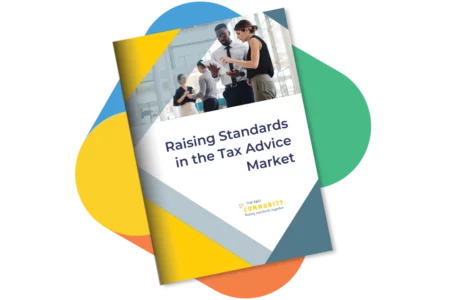We should note that this consultation was not exclusively about R&D tax relief, instead it examined the tax advice market as a whole. But, with the focus on registration, regulation and qualifications for tax advisors, many in the R&D tax relief industry felt it had particular relevance to them. Plus, as an industry that has had its struggles with bad actors, R&D tax relief indisputably has some room for improvement.
How could the HMRC Consultation Impact R&D tax relief?
The consultation has significant impact on R&D tax relief because it’s an area of tax that has a particularly high number of unaffiliated tax advisors – those not belonging to any of the professional bodies.
This is down to a couple of reasons:
- R&D tax relief is complex and open to interpretation. Confidently and competently working within it requires a large investment of time and effort – and can generate significant fees. This means that preparing claims can easily be a full-time occupation without the need to supplement income via participating in other areas of tax.
- Many people become advisors because they have previously worked in an R&D-heavy industry and have specialist knowledge of technology. This leaves them well-equipped to help businesses in those industries with their claims.
In the consultation, HMRC outlines three possible approaches to raising standards through regulation of tax advisors:
- Mandatory professional body membership – With professional bodies monitoring and enforcing standards of their members and raising those standards where necessary. Tax practitioners would be required to hold membership of a recognised professional body to provide paid-for tax advice and services.
- Joint HMRC-Industry enforcement – HMRC and industry would monitor and raise standards of the market. Unaffiliated tax practitioners would have to be supervised by HMRC and professional body members would be subject to the supervisory requirements of their professional body.
- Regulation by a government body – The government body would set, monitor, enforce and raise standards in the market. A new independent regulator or an existing regulator with an expanded remit would supervise tax practitioners.
Depending on which approach HMRC eventually puts into action, the impact on the R&D tax relief advisory market could be significant and radically change how R&D advisors deliver their services.
With input and feedback from our members, we sent a response to HMRC’s consultation that focuses on how the different approaches could affect R&D tax relief, claimants, and those working in the field.
You can download and read our full consultation response, and we’ve summarised it in broad strokes.
Our Evaluation of the Proposed Approaches
Approach 1: Mandatory Membership of Professional Bodies – We believe this approach is flawed for several reasons:
- The existing professional bodies might find it difficult to efficiently and effectively assess R&D advisors’ technical competence due to the specialised and subjective nature of the work.
- There is a risk of inconsistent standards and enforcement practices among the different bodies.
- The approach may force unaffiliated advisors, some of whom might have high levels of R&D expertise, to leave the market or retrain unnecessarily.
Approach 2: HMRC and the Professional Bodies regulate tax advisors – While this might be a better solution than Approach 1, there are still a few serious problems:
- There are likely to be inconsistencies between how HMRC and the professional bodies regulate their members
- Historical data suggests professional bodies have not been entirely effective in ensuring that their members are preparing fully compliant R&D claims.
- It is simplistic to assume that professional body membership alone will improve compliance and claim quality.
The third approach, on the other hand, seems like the most comprehensive and sensible path to improving standards without leaving anyone out in the cold.
Approach 3: Regulation by a Government Body
We think that this is the best approach for a few different reasons. Not only would it ensure that the interests of unaffiliated advisors are represented, but it could also stand the best chance of actually raising standards in a meaningful way.
The advantages of this approach are:
- Consistency in Standards: Having one standard for everyone ensures uniformity and fairness, avoiding the inconsistencies inherent in the other approaches. A single regulatory body would provide clear, detailed standards that all advisors need to follow.
- Proactive Oversight: The new regulator would not only set standards but could also proactively verify that advisors are meeting their Continuing Professional Development (CPD) requirements. Ideally this would go beyond relying on advisors’ self-declarations, which are often unreliable.
- Assessment of Knowledge and Competence: The regulator could objectively assess the knowledge and competence of R&D advisors , ideally at different levels of expertise. This would ensure that advisors have the necessary skills and understanding to provide high-quality advice and services.
- Handling Complaints: The independent body would have the authority to investigate complaints against advisors who violate standards or provide poor advice. This would be crucial for maintaining high-quality service and accountability within the industry.
While this is the most comprehensive approach, it’s also the most expensive to implement. Establishing a new regulatory body requires significant resources and effort. But, if HMRC is serious about raising standards, we think it would be worth the investment.
How else could HMRC raise standards in R&D tax relief?
While most of HMRC’s questions specifically focused on the three approaches, others sought input on more specific, targeted issues. Our full response has more details, but there are two problems within R&D tax relief that we feel are the biggest barriers to a fair and responsible market.
Lack of R&D-Specific Qualifications – The absence of specialised qualifications in R&D tax relief leads to inconsistent knowledge and service quality among advisors. This issue affects both affiliated and unaffiliated advisors, as even the professional bodies don’t provide comprehensive R&D-specific training or professional certifications.
Ineffective Deterrents for Dishonest Practitioners – It has long been an issue that some rogue advisors actively damage the scheme’s reputation and take advantage of unsuspecting claimants. Some persuade companies into submitting low-quality claims, or exploit the system by prolonging R&D enquiries and then restarting their operations under new legal entities. Stronger deterrents for dishonest advisors would go a long way to ensuring that advisors can compete on a level playing field.
We’ve identified 3 routes to combating these issues, some of which we’ve already put into practice.
- Certification Programs – These programs could objectively assess advisors’ knowledge and competence in R&D tax relief. In fact, we’re set to launch a Foundation Certification in September 2024 and an Advanced Certification in 2025. If you want to learn more about our plans for certifying R&D advisors, read our most recent update.
- Enhanced Training and Support – We develop comprehensive, specialised R&D tax relief training, and would readily partner with professional bodies to augment their own training. We think this could do much to help their members deal with the complexity and subjectivity of the current R&D schemes.
- Practical Measures for Compliance – Rather than relying on annual declarations, spot checks on firms’ work by a specialist Government body could be a more effective way to assess average claim quality. If any claim could get checked and there were meaningful consequences for poor work, there would be much more incentive for advisors to work to a consistently high standard.
Overall, we think that the most effective route to improving standards in R&D tax relief lies in practical solutions focused on training, certification, and systematic assessment. If you want to read our full response, you can download it here.





